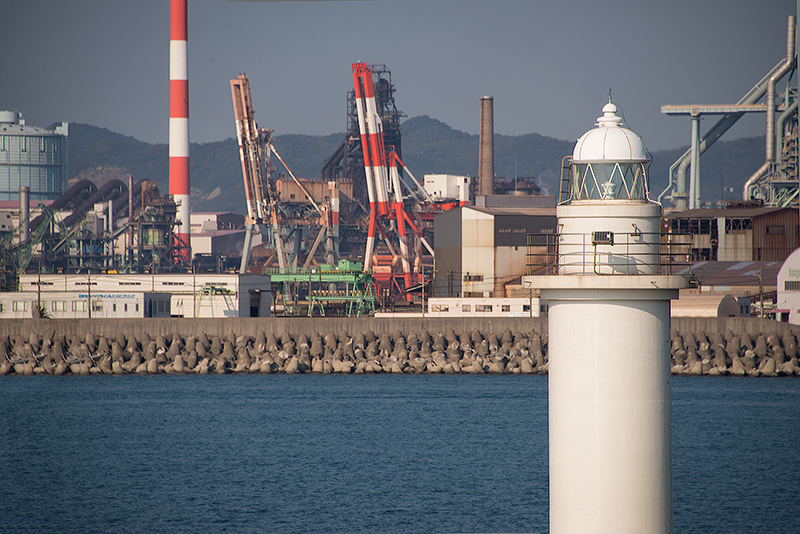When Kayoko at the Sakuraya Guesthouse in Nara had helped me figure out my transportation logistics, she saw the Nankai Ferry ticket in the folder from the travel agent, and exclaimed, “Oh, you’ll be riding the ‘Big Tuna’!”
The Nankai Ferry is indeed a very big boat. It carries cars as well as people. Steaming out of the port of Wayakama on my way to Shikoku Island, I was surprised not only at the size of the boat but also the size and extent of industry that seems to dominate much of the Japanese coast.

The interior of the boat held a number of surprises for me as well. First, much of the lounge space was devoted to a tatami area. This is what Japanese people are used to in their homes, restaurants and hotels. You take your shoes off, and lie down on the floor, maybe to sleep or play with the kids. It was odd, but pleasant, to see everyone lounging on the floor inside the Big Tuna.
The other major inside space was devoted to game machines, and—thank the Internet deities—free wi-fi!
My approach with boats is always to try to find as high a place as possible on the outside with a frontal view. Alas, on the Big Tuna this was not possible. All the exterior space faced the back of the boat. The only place to get a forward view is inside—where you pay an extra fee to go into a special overheated lounge with reclining chairs and a forward-facing view.
Aya told me that before they built the Shikoku-Honshu series of bridges—connecting Shikoku to Honshu Island and the mainland across the Inland Sea, and completed in 1999—the way to get to Shikoku was by ferry. These days, a more common approach is by bus from Osaka (it is about a four hour ride from Osaka to Tokushima). So my approach to Shikoku was very traditional, as befits a pilgrim coming off the Kumano kodo.
Pingback: Heading for Japan
Pingback: From Heaven to Hell